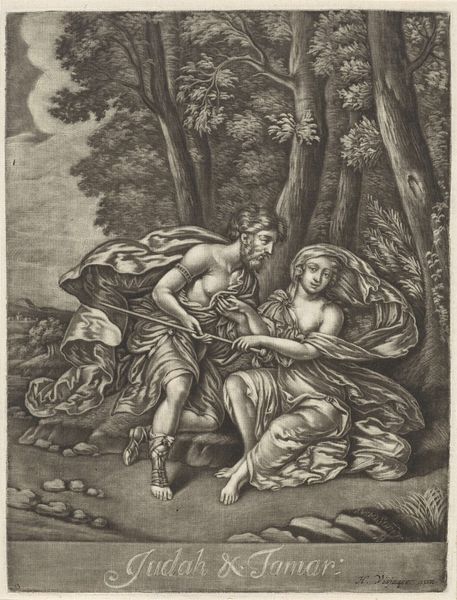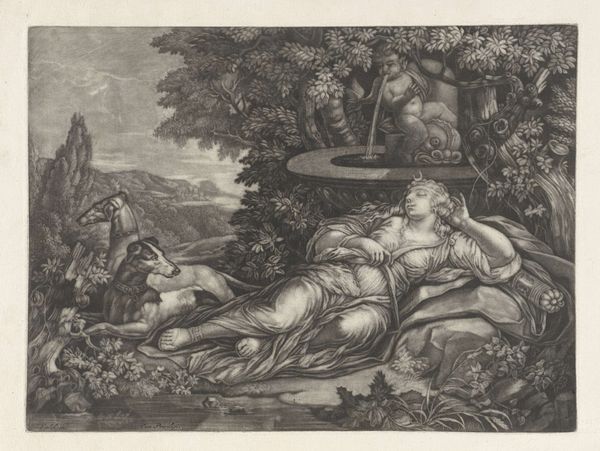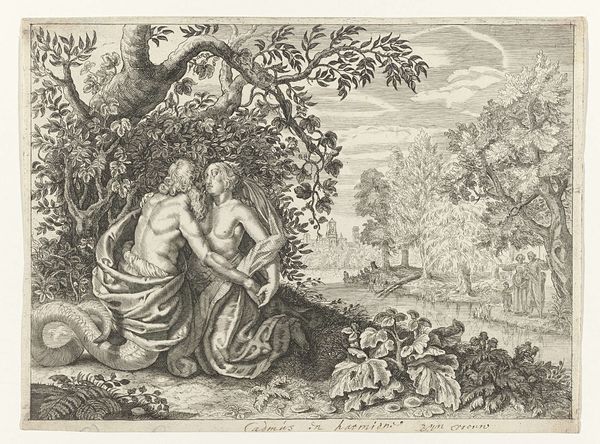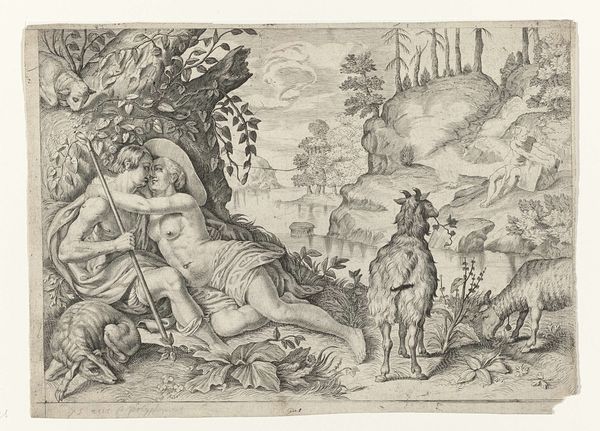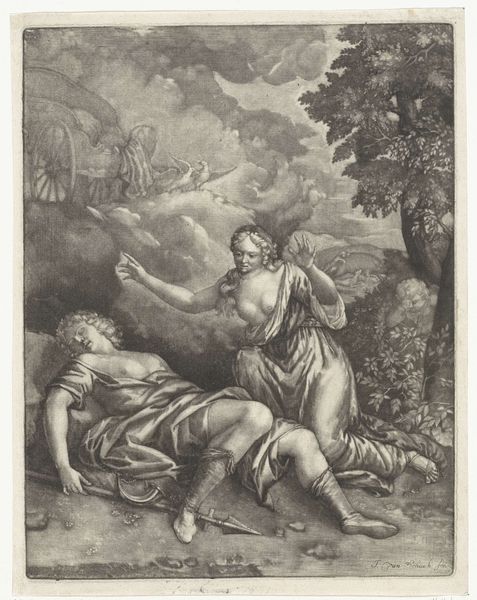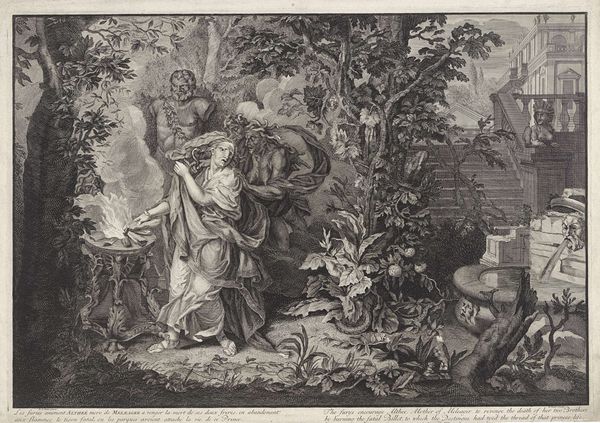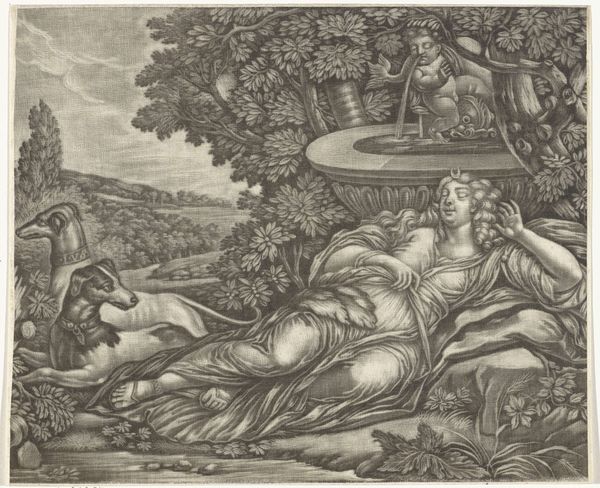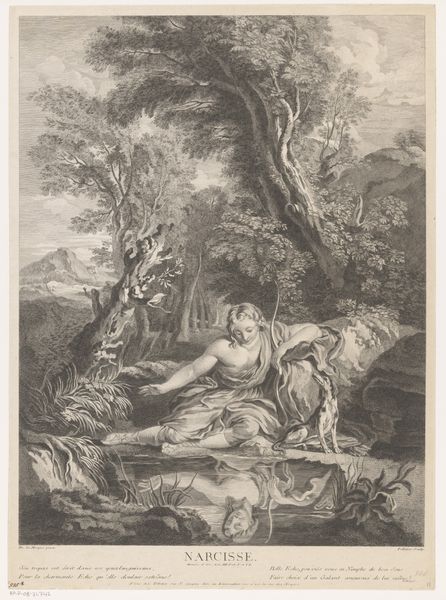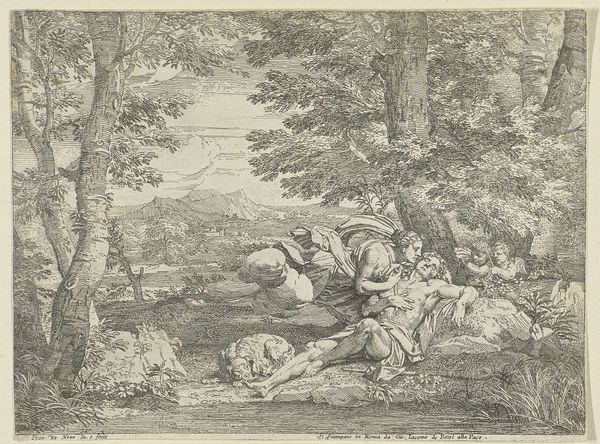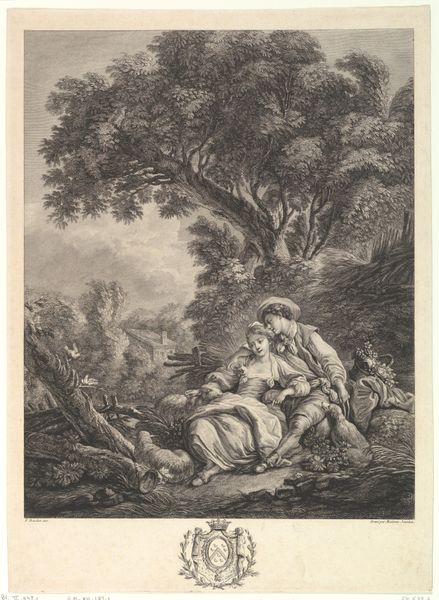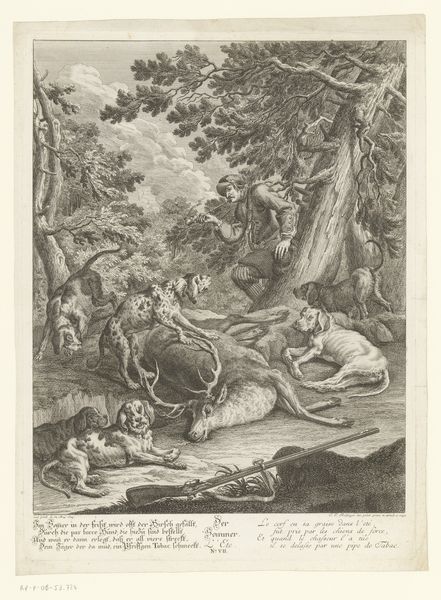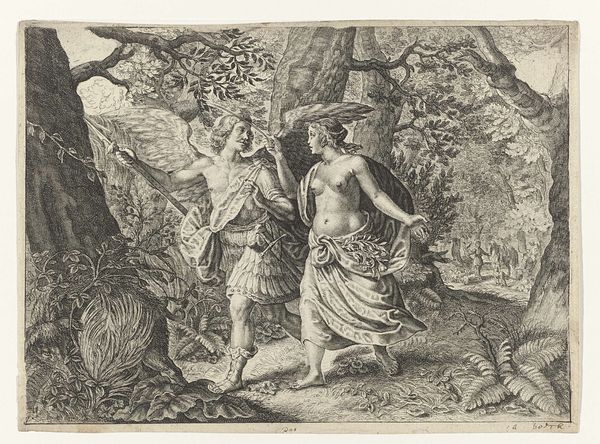
drawing, etching, ink, pen, engraving
#
drawing
#
narrative-art
#
baroque
#
etching
#
landscape
#
charcoal drawing
#
figuration
#
charcoal art
#
ink
#
pencil drawing
#
pen-ink sketch
#
pen
#
portrait drawing
#
history-painting
#
engraving
Dimensions: height 196 mm, width 242 mm
Copyright: Rijks Museum: Open Domain
Editor: So this is "Pyramus and Thisbe," made sometime between 1655 and 1700 by Jan van Somer. It’s an engraving, so we're looking at a print, and the stark contrasts really create this dramatic, almost theatrical mood. How would you read this piece? Curator: Well, from a materialist perspective, I'm interested in how this print functions within its social and economic context. Engravings like this one weren't simply artistic expressions. They were commodities. Think about the labour involved – the engraver meticulously translating an image onto a metal plate, and then the reproduction and distribution process. Editor: That's fascinating, I never really thought of art being labor intensive. So, how does this particular image then relate to the whole printmaking industry at that time? Curator: Precisely! This image could be reproduced and sold relatively cheaply compared to an original painting. Who would have bought it? And what kind of meanings did this readily accessible narrative carry with it for different segments of the population? Consider too the 'narrative-art' and how that functions in a commodified landscape. What story of love, loyalty or sacrifice would be bought or disseminated and why? The distribution networks determined the interpretation. Editor: So, it’s not just about the image itself, but about how the means of production and distribution shaped its meaning. Do you see those factors affecting how the original art might have been influenced by these same consumer driven needs? Curator: Absolutely. Printmaking demanded a certain clarity and legibility. It privileges the linear over the painterly. The very nature of the medium encourages simplification and standardization for wider consumption. What might have been left out? Added? Mass production changes both art and audience. Editor: That's a completely new perspective for me! I guess I’ll start thinking a lot more about who was making the art, and the whole chain of how an artwork moves from creation to being consumed.
Comments
No comments
Be the first to comment and join the conversation on the ultimate creative platform.
